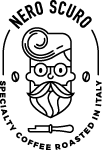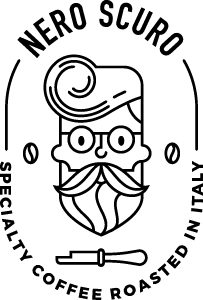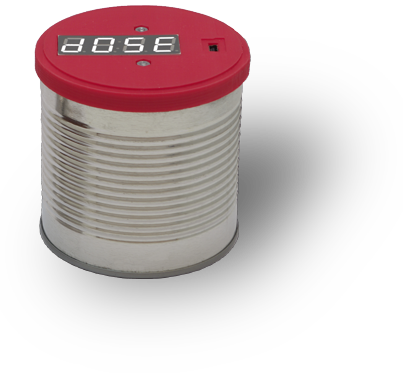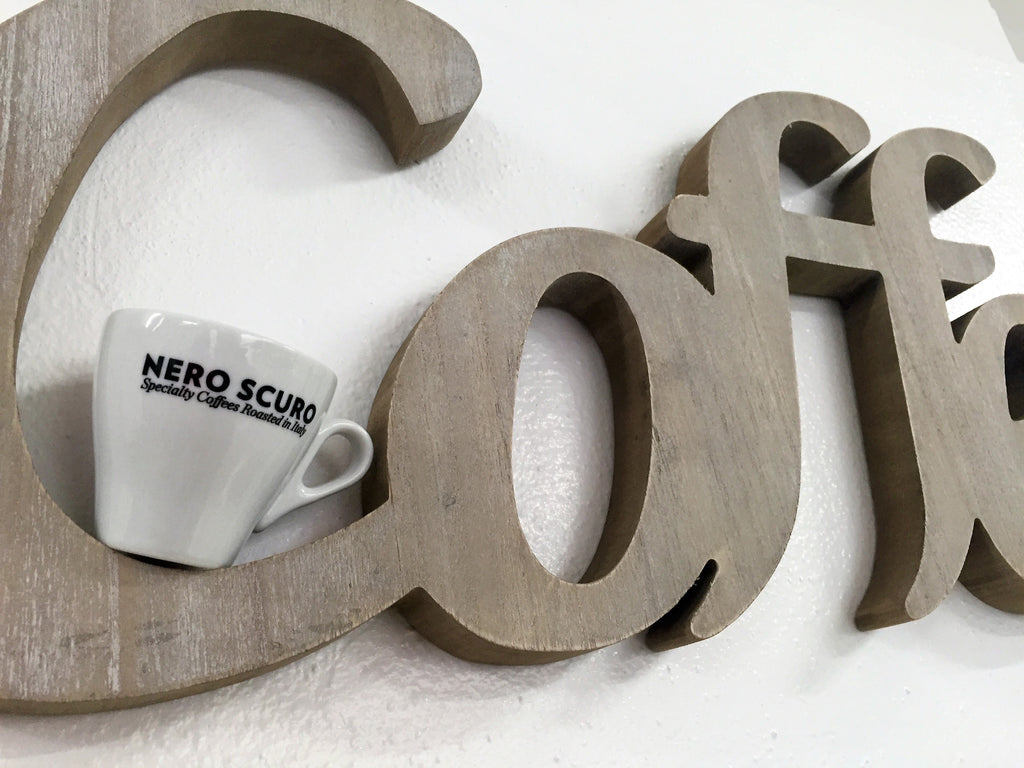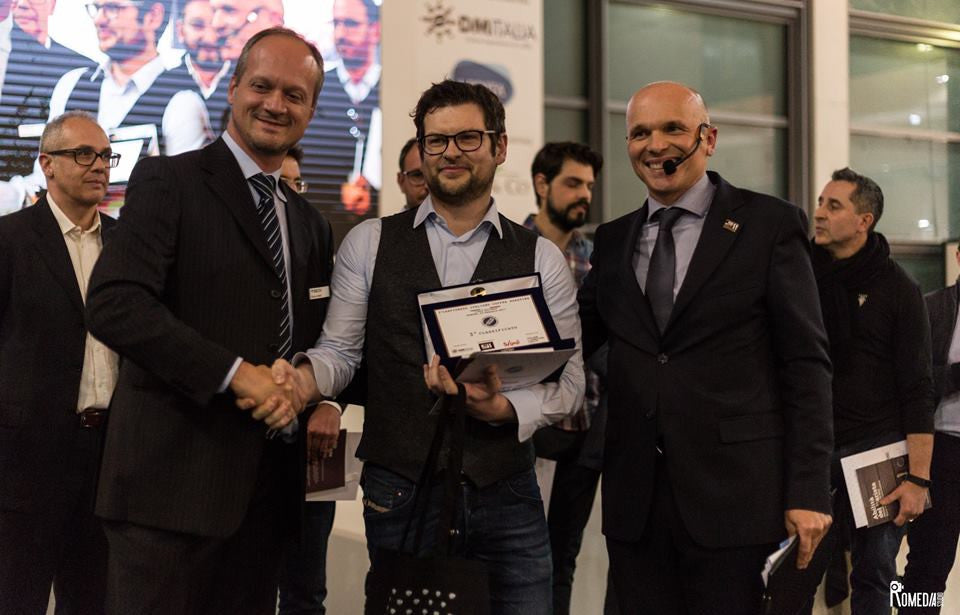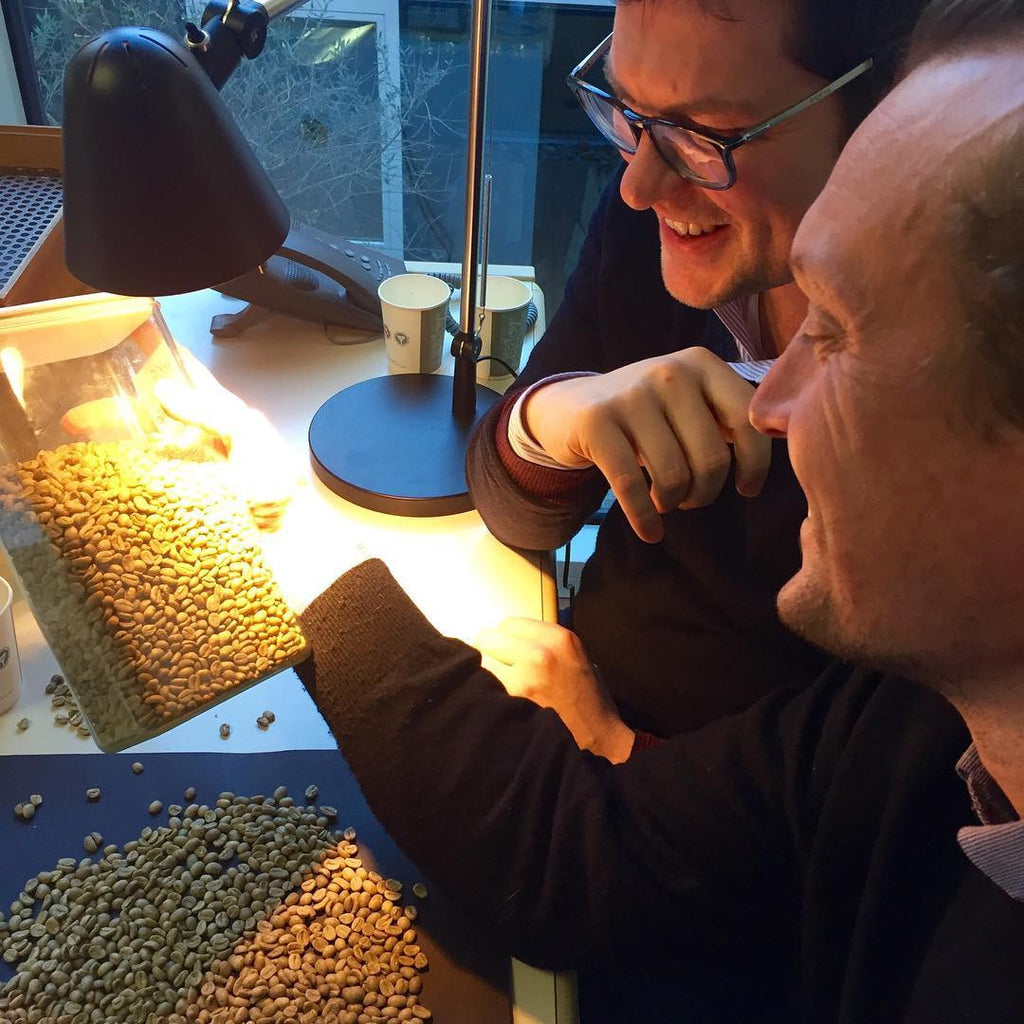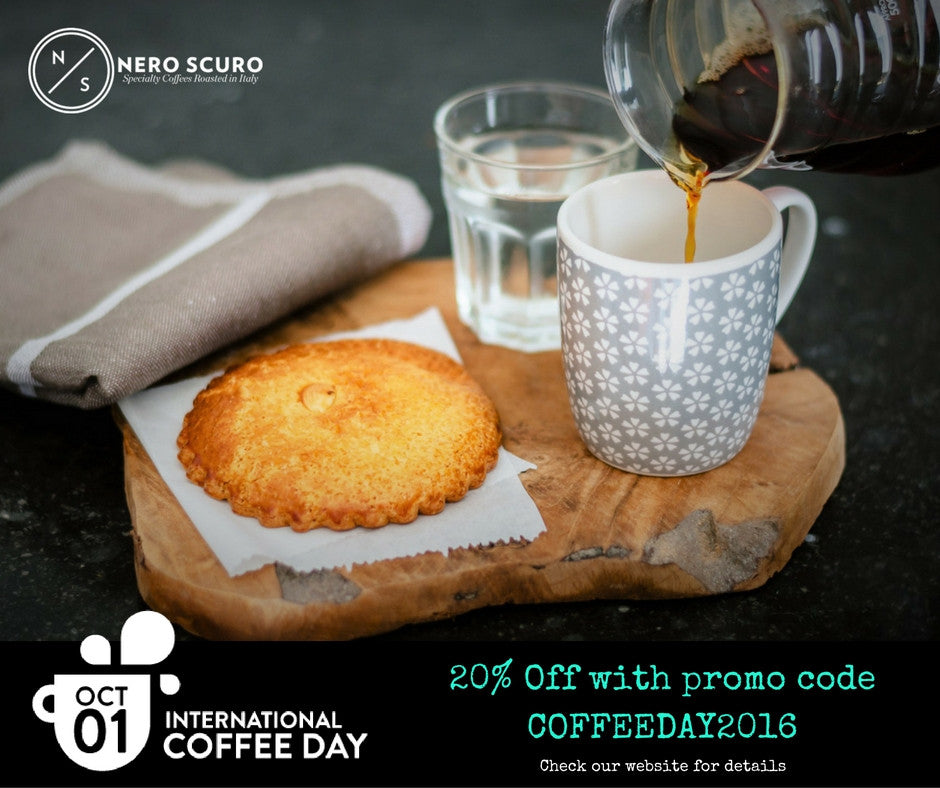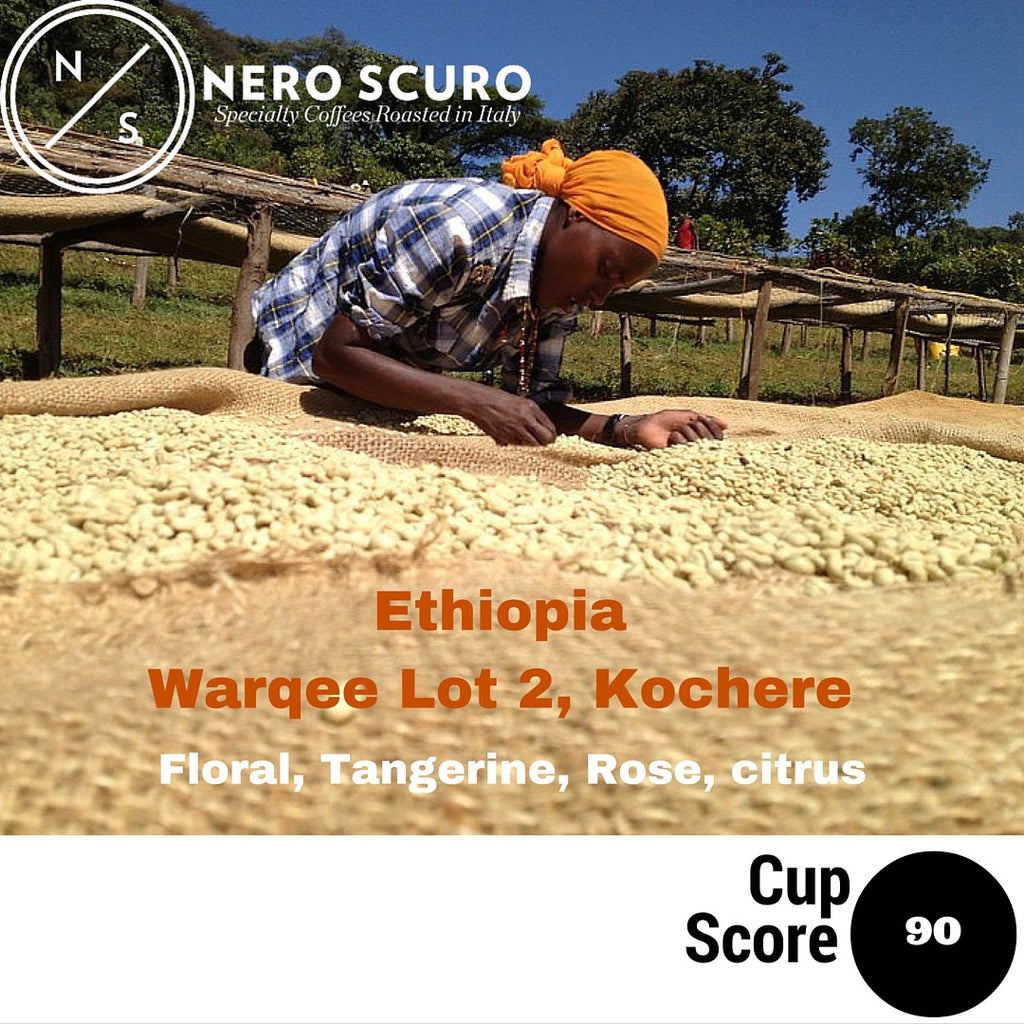An empirical test of the relation between the degree of grinding of the sample and the measured color
The quality check protocol implemented by us at Nero Scuro requires a roasted coffee color measurement for each and every batch we push through our roaster. This is of paramount importance to ensure good roasting consistency, amongst different batches and with the target roasting profile we develop for each coffee.
The measure is taken on the coffee immediately after cooling it down at room temperature. To this end we use the original Tonino Roast Color Meter. Designed and developed by Marko Luther, the creator of Artisan, this instrument represents a convenient and cheap solution to assess and compare roasted coffee colors.
The measurement is performed by finely grinding a coffee sample on an espresso filter and tamping the grounds firmly to level and compact them as much as possible. The instrument, when appropriately calibrated and positioned upon the flat coffee surface, reads a numeric value corresponding to the color: the higher the number, the lighter the measured color; the lower the number, the darker the color. The scale is native to the instrument, although user defined scales can also be used. Based on the values read by Tonino for the two calibration disks that comes with it, we can hypothesise that measurable values range from 25 (dark disk) to 250 (red disk).
Our goal, when evaluating the color consistency of a batch, is to stay within a range of +/- 3 of the color value for the coffee roasted when we developed the reference profile (we obviously want also to meet the roasting times and temperatures of such reference profile during roasting. To this end we used Artisan, and lately Cropster, connected to a number of custom probes positioned on our heavily customised Probatone, but this is a different story...).
Practically speaking, Tonino appears to be very consistent when measuring multiple times a sample, making it often unnecessary to average out multiple measures. We noticed however that the instrument is very sensitive to granulometry variance of the measured grounds: different grind levels for the same coffee may lead to substantially different measured color values. For this reason in the Nero Scuro Laboratory there is a grinder dedicated only to sample preparations. Such grinder is adjusted to the finest level allowed and rarely touched.
To verify empirically whether and how much each color measurement is actually affected by the grind level, we performed the following experiment.
We used a single batch of our Brazil Santa Cecilia, a specialty coffee imported from Nordic Approach sold on our shop. For this coffee we developed a roasting profile with the espresso extraction in mind. The color, when roasted with such profile and compared to the "SCAA tiles" through visual inspection, is very close to the tile #75 (only slightly darker). The color is therefore relatively light in the Italian coffee roasting landscape, and this is a key characteristics of our roasting style.
Using the reference grinder and Tonino, we measured a value of 85 on a sample roasted less than 4 hours before. This value represents exactly the reference value we set for this specific coffee and roasting profile. This batch would therefore pass all our quality checks in normal production conditions.
We then switched to our Mahlkoening EK43 'Matt Perger Edition' and, starting from a grind level of 1 (very fine grounds) we prepared nine samples of the same coffee by increasing the grind level of 5/10 each time (corresponding to 5 intermediate ticks on the EK43) until we reached level 5. This last is almost halfway to the coarser possible level (see the picture below). We therefore obtained a total of nine samples corresponding to the same number of grinding levels (1, 1.5, 2, 2.5, 3, 3.5, 4, 4.5, 5).
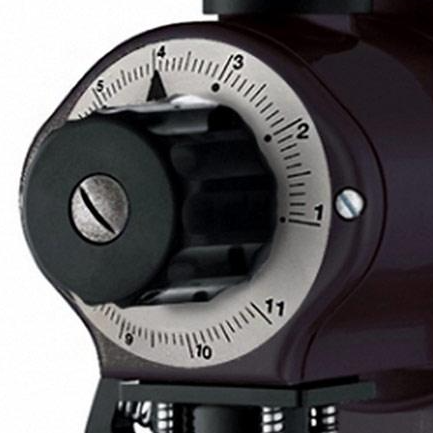
Each sample was ground on a cupping tray. Three consecutive color measurements were performed on each sample with Tonino. After each measurement, the coffee was discharged from the filter to the cupping tray, poured again on the filter, tamped and measured again. This was done three times for each sample. We always tried to tamp the sample carefully to ensure a surface as smooth as possible.
Tonino was calibrated at the beginning of the test, and before each measurement we verified that the measured values corresponding to the calibration discs were 25 (brown disc) and 250 (red disc), indicating a perfect calibration.
The following chart and the corresponding table below summarize the measurement results.
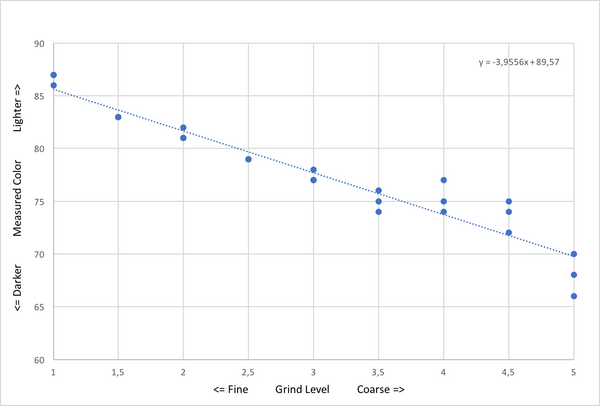
|
Measur.#1 |
Measur.#2 | Measur.#3 | Max minus Min | Average | Acceptance value | Difference |
| 86 | 87 | 87 | 1 | 86,3 | 85 | +1,3 |
| 83 | 83 | 83 | 0 | 83,0 | 85 | -2,0 |
| 82 | 81 | 81 | 1 | 81,3 | 85 | -3,8 |
| 79 | 79 | 79 | 0 | 78,8 | 85 | -6,3 |
| 77 | 77 | 78 | 1 | 77,0 | 85 | -8,0 |
| 75 | 76 | 74 | 2 | 74,8 | 85 | -10,3 |
| 74 | 77 | 75 | 3 | 74,8 | 85 | -10,3 |
| 72 | 75 | 74 | 3 | 73,0 | 85 | -12,0 |
| 68 | 70 | 66 | 4 | 67,8 | 85 | -17,3 |
The data highlight the following:
- As a matter of fact, the values measured on samples ground to the same level are very consistent, the more consistent the finer the grounds. In particular, the consistency was excellent up to a level of 3 on the EK43, with a maximum difference of one point among the values. With coarser grounds the variance increases, up to 4 points when the EK43 was set to 5.
It is worth noting that the coarser the grounds, the less regular the surface of the sample tends to be. It was in fact practically impossible, for the grinder settings close to 5, to obtain a smooth, compact and consistent sample surface (check the pictures below).
Finer ground sample (EK43 set to 1)
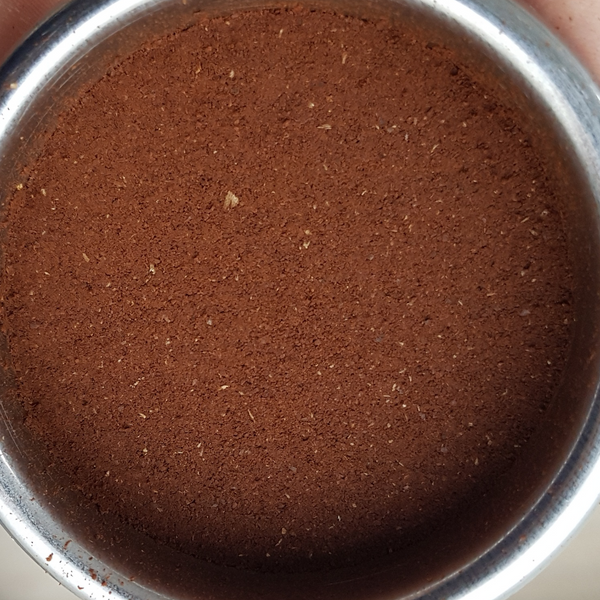
Coarser Ground Sample (EK43 set to 5)
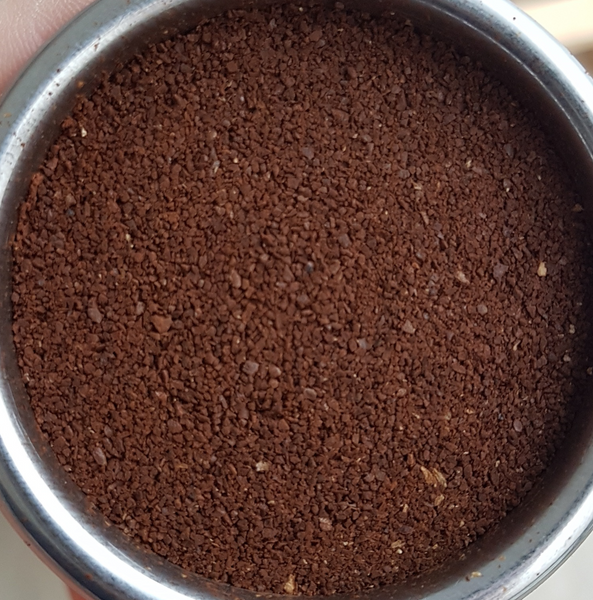
- The measured values changed significantly as the granulometry increased. When the coffee is ground finer, Tonino reads it "lighter", if coarsely ground Tonino reads it "darker". The variance between EK43's set to 1 (color measured at 86) and set to 5 (color measured at 68) was 18 points in the Tonino scale!
It should be noted also that, with the EK43 set between 1 and 2, the coffee fully conformed to the reference profile. The measured value was in fact within the +/-3 bracket to the reference measure. On the contrary, incorrectly setting the grinder to a value of 2.5 or higher would have led to discard the batch as too dark. It is therefore pivotal to ensure comparable measures amongst different batches that such measures are taken on samples prepared with a grinder consistently set.
In practical terms, however, the consistency appears to be very good or excellent. In fact, a good batch discarded due to ground coarser than the reference sample would require to turn the knob of the EK43 of at least 5/10 away from the reference grind level, which is a quite substantial turn on the EK43.
As seen, an increase in sample granulometry increases also the variance amongst same coffee measured values. I believe this is mainly due to the difficulty of properly preparing flat and consistent samples when the ground is coarse. Also, as long as the grind level is kept in the 1-3 range on our EK43 (i.e. within the first 30 thicks), the relationship between measured values and the grind levels appears to be linear. Above 3, the relationship becomes more and more non-linear.
In conclusion, to obtain comparable color measures for different coffee samples, it is crucial that the samples are a) ground with similar granulometry and b) such granulometry is finer rather than coarser.
The finer the grounds, the more consistent the measures appear to be. In general, the measures of Tonino appear highly consistent. This is therefore an excellent instrument to check the roasted coffee color, especially in the light of its low price, which is about 1/3 to the second cheapest instrument on the market (the Lighttells CM-100).
-----
An interesting Tweeter conversation on this topic:
Very interesting! I wonder if there is really a difference in the average colour or if is an artifact of the device/measurement technology?

Sounds plausible to me. Shows how important it can be to understand what (and how) you are measuring!
